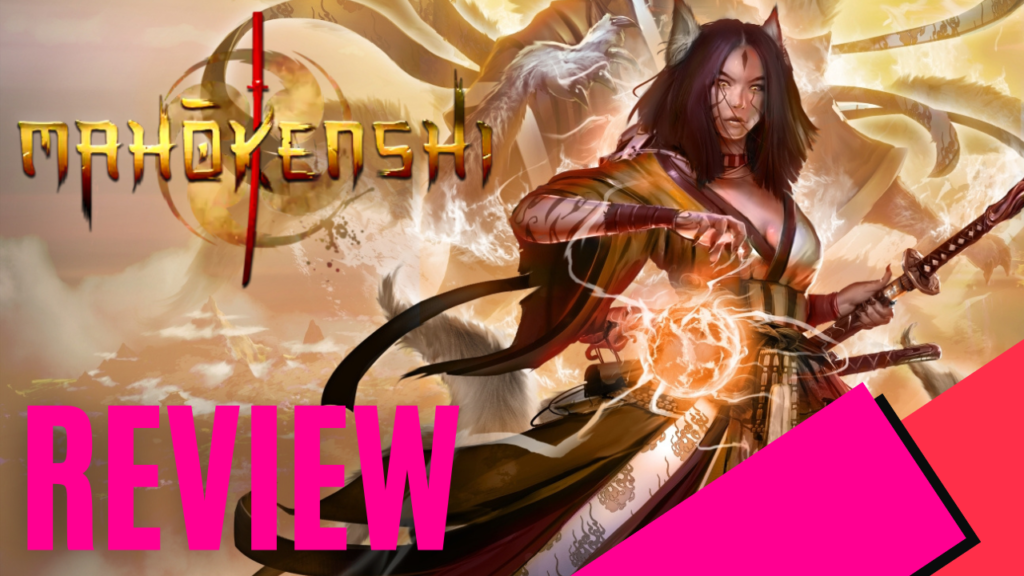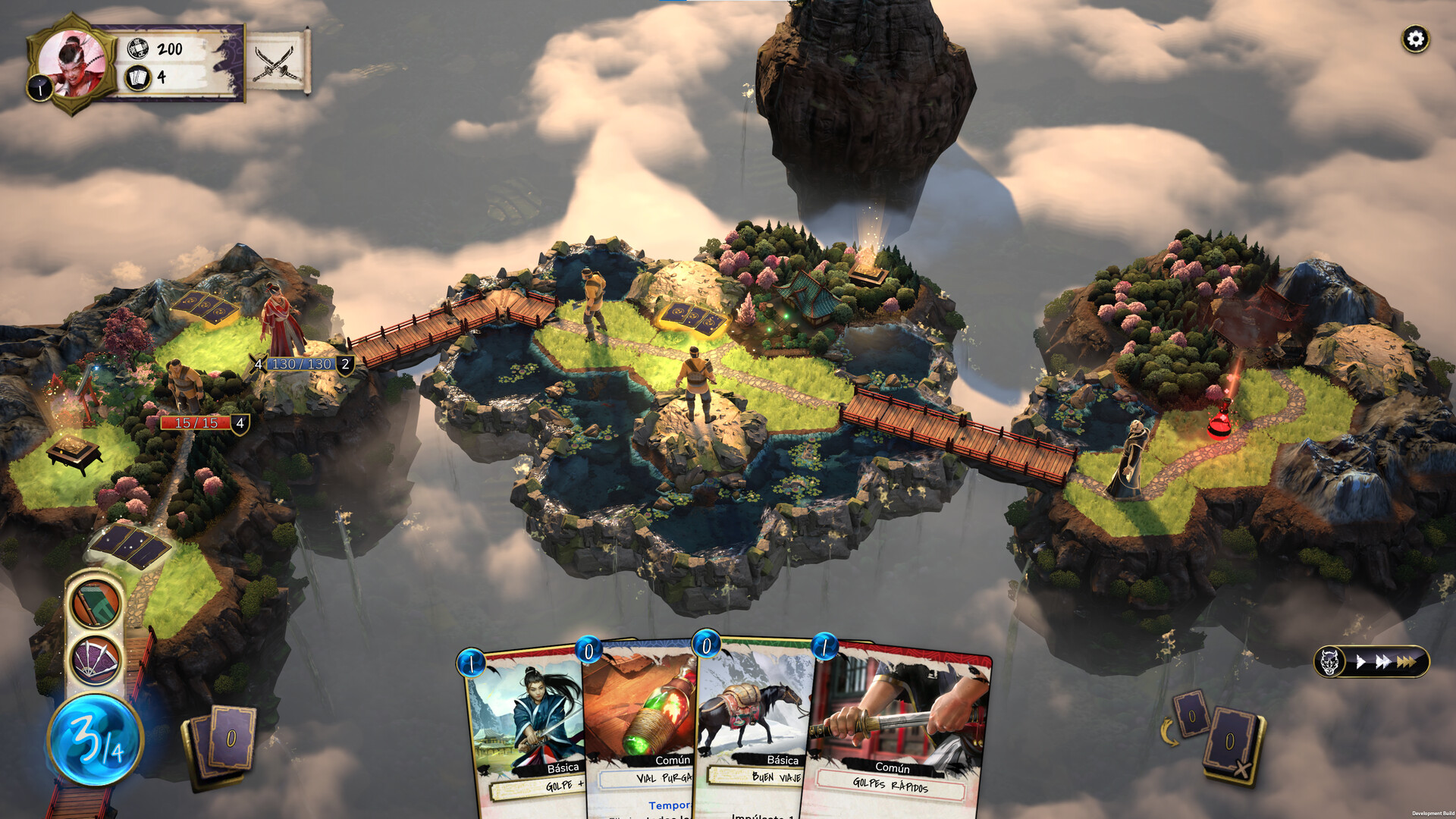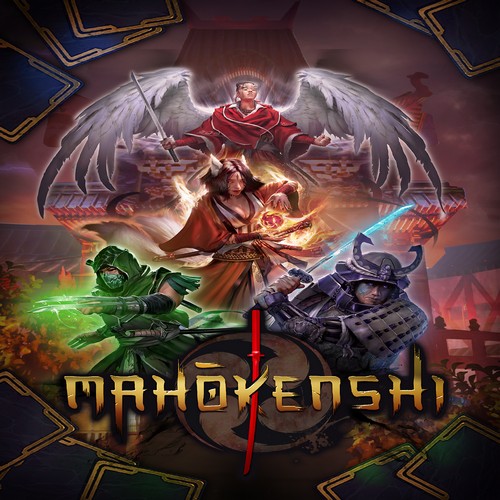
Feudal Japan is easily one of the most compelling settings in gaming, and Mahokenshi seeks to take full advantage of it. Created by Game Source Studio and published by Iceberg Interactive, this deck-building meets turn-based strategy game combines some unique and varied elements that weren’t afraid to beat me down.
Before I get into the meat and bones of the review, you’ll need a quick overview of the entry requirements. The minimum requirements for this game require Windows 10 or higher, and at least 8GB of RAM paired with a minimum of GTX770 series or AMD equivalent graphics card. My Laptop met both minimum requirements, but it would only comfortably run on medium or low. To take full advantage, it is recommended to use an Nvidia RTX 2080 or AMD equivalent with 16GB of RAM and an i7 processor.
The floating Celestial Islands have been corrupted and slowly turned against those that inhabit the sacred plains. The demons are bursting forth from the underworld and giant Oni beasts are standing between the four Samurai mages and their true destiny.
Ayaka, from House Ruby, who isn’t afraid to risk her life to deal untold damage, will be your opening character. Kaito, from House Sapphire, is the heavily armoured traditional Samurai that has a stoic demeanour. Sota, from House Jade, is the assassin-like stealth and poison-based soldier who oozes style. This leaves us with Misaki, from House Topaz, the enchantress whose skill in the art of spirits and wards cannot be matched.

In a grandiose flair for narrative, the dire situation was defiantly presented well and led easily into each scenario per mission. The playing field was a living board game with hexagon-shaped tiles that connected and branched out to offer different options and set pieces per map.
With different pieces of terrain to cover, the rocky foundation and tree-filled tiles next to the open fields or structures painted a complete picture of the fields at play using a top-down perspective. Then the added weather elements at play could transform the cosy and vibrant green fields into an icy tundra, clashing with the glowing and pulsating pools of evil spewing out of the portals to the underworlds intruding on the lands, making this quite the picturesque game.
The aesthetic of the game extends to the menu display and the artwork on the cards themselves. The traditional Japanese-styled calligraphy and artwork remained consistent throughout, and each character had their own themes to them as well.
I was swayed by the musical score which used familiar Japanese-inspired instruments and tones to help focus on the action or unwind in the main menu when reviewing my next upgrades. There is an element of repetitiveness that would loop back on itself as the strategy side of things can often leave you studying the map before your next move, but it was never egregiously intrusive.
Several components went into the combat loop that were quite intuitive and easy to understand. Each turn you are allotted four energy points that can be spent on movement or playing a card. The cost of moving one space is one per tile – unless there is a specific terrain such as rocks, trees, or water which could cost up to three per tile.

A card’s ability, however, can turn the tide and let you traverse three tiles no matter the terrain at the cost of one energy, but it may come with a drawback of taking five hit points from you, for example. There will be tiles with random cards to pick from, gold to collect, and shops to buy new cards or upgrade existing ones as well, so planning how you want to travel around is engaging and half the battle.
Each enemy type could vary from large, hulking Oni beasts with forty health points, to small demons that can be felled with one attack card. Given the six-sided titles nature though, if six of the smaller demons block your path and attack from each side, your pool of health can plummet with no option to escape, especially if the free hand of cards you pull at the start of your turn has no movement options. The side objectives that challenge you to complete certain conditions can offer handy rewards that you can use to upgrade all character’s passive traits. This means that when you unlock a new level one character, they can revisit an older mission and knock off the side quests, allowing them to upgrade their personal level and lead to an overall nice sense of replayability.
There was no difficulty setting to tune my experience, however, so I found chasing these side quests to be the difficulty check. Playing in a specific way and not being able to carry over the upgraded cards between runs did keep things challenging at times. While each map was handcrafted and well put together, they would play out the same way each time, for the most part, so repeat runs do run the risk of feeling stale compared to a true rogue-like that would randomly generate a course.
Feeling like a Samurai mage has never been easier than in Mahokenshi. With an engaging set of systems that mesh well together, forming strategies to tear through demons or outmanoeuvre them was engaging and fun.

The Good
- Four distinct character play styles
- Art style, graphics and theme are all impressive
- Deck building is straight forward and intuitive
- Plenty of side quest for repeat plays
- Hexagon tile maps are fun to navigate
The Bad
- No difficulty setting to adjust the experience
- After side quests are completed there is little replay value








